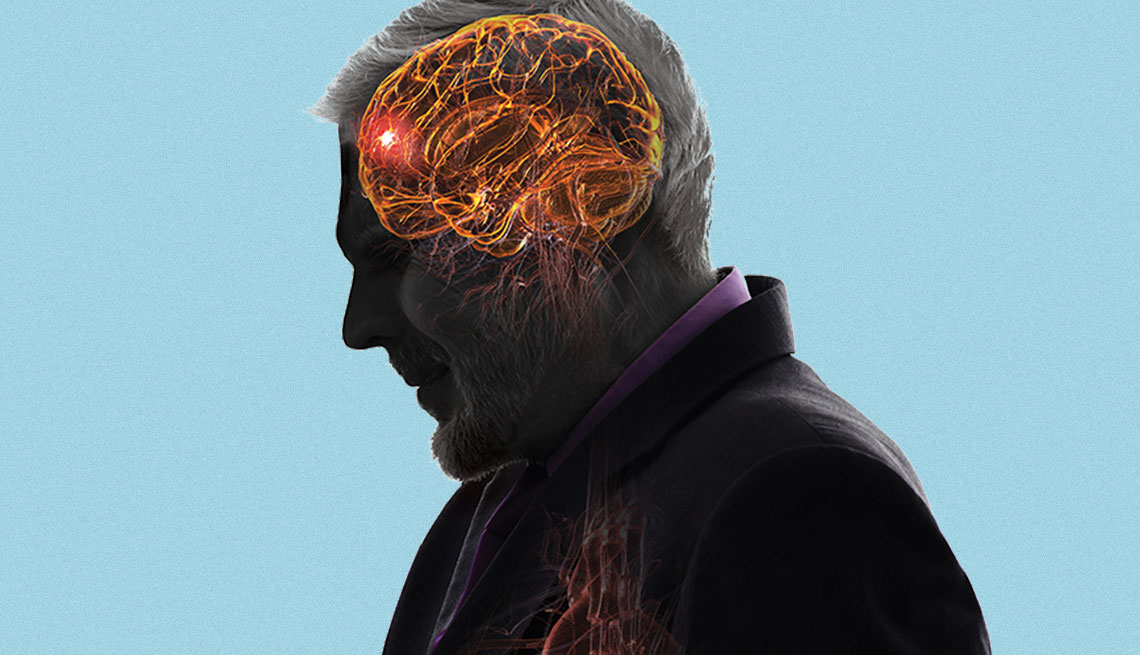Staying Fit
In her mind she was talking — relaying to her hairstylist stories from her recent trip to Rome. But as Beth Bonness looked at herself in the mirror, dye still in her hair, she could see her mouth wasn’t moving. That’s weird, she thought.
Snowflake-like lights appeared to the side of her left eye, and her right hand curled into a claw. Her stylist — asking Bonness if she was OK, if she needed help — sounded like she was underwater.


AARP Membership— $12 for your first year when you sign up for Automatic Renewal
Get instant access to members-only products and hundreds of discounts, a free second membership, and a subscription to AARP the Magazine.
“And there was pressure, but no pain,” says Bonness, of Portland, Oregon.
The whole thing lasted a few minutes — maybe four, she recalls. So Bonness, then 49, finished up her hair appointment, met her family for dinner at a nearby restaurant, then went home and filled her husband in on the strange events of the afternoon.
Soon after, Bonness was in the emergency room getting checked out. It was there she learned, blood pressure sky-high, that she’d likely had a transient ischemic attack, or TIA, which happens when blood flow to the brain is temporarily blocked. Roughly 240,000 Americans a year have a TIA, sometimes called a ministroke, according to the American Stroke Association, though this number is probably higher since they often go unreported. And though they can occur at any age, they’re most common among adults 55 and older.
Bonness went home with blood pressure medication and a plan to take it easy for a few days.
Knowing when to seek help
TIA risk factors
Major risk factors for TIA include:
- High blood pressure
- Diabetes
- Heart disease
- Atrial fibrillation
- Smoking
Source: American Stroke Association
It’s not uncommon for symptoms such as the ones Bonness experienced to be brushed aside, says Hardik P. Amin, M.D., associate professor of neurology and medical stroke director at Yale New Haven Hospital St. Raphael Campus in Connecticut. A big reason: When it comes to a TIA, there’s no pain involved.
“Usually if there’s a pain component, that’s going to send folks running to the hospital,” Amin says. “Here, it’s more like a loss of ability to do something.” And that loss of ability quickly resolves, often within a few minutes.
A short-lived weakness or numbness in the arm? “Sometimes patients just think, Oh, I just slept on it funny. I’ll try to shake it off or just kind of work through it and see if it just gets better on its own,” Amin says.
Bonness, who was a busy working mother, admits that when her TIA was happening, “there was a soft little part” of her that thought it could be stroke related. But with everything going on in her life, she says, “there wasn’t a lot of air space for the quiet warning signs to percolate.”







































































